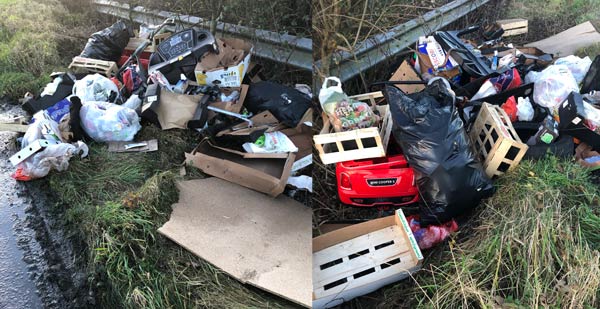More packaging waste, plus falling recycling rates for plastic, together with a heavy reliance on exports, mean that Ireland is missing opportunities to foster a circular economy.
- Ireland generated over 1.1 million tonnes of packaging waste in 2019, an increase of 11% on 2018 and the third year in a row it has exceeded one million tonnes.
- Largest increases were seen in the generation of plastic and paper/cardboard packaging waste.
- Less than one third (28%) of Ireland’s plastic packaging waste was recycled in 2019, with almost all remaining plastic packaging being sent for incineration.
- The share of plastic packaging waste incinerated for energy recovery has grown year on year from 44 % in 2017 to 69% in 2019.
- We need to rethink how we make, transport and use products, cutting down on unnecessary packaging and maximising reuse and recycling.
- The reintroduction of soft plastics to Ireland’s recycling list and the forthcoming deposit return scheme for plastic drinks bottles and aluminium cans are positive steps towards increasing Ireland’s collection of packaging waste for recycling.

The EPA has today published its latest figures on packaging waste in Ireland. They indicate that Ireland generated over 1.1 million tonnes of packaging waste in 2019, up 11 per cent on 2018. This is the third year in a row that packaging waste in Ireland has exceeded one million tonnes. Most of this consisted of plastic and paper/cardboard, with smaller amounts of glass, wood and metal packaging. Almost all plastic and paper/cardboard, and most metal packaging waste, was sent abroad for recycling.
The data shows that while Ireland continued to meet all current EU targets and achieved high recycling rates in some packaging material streams, in particular glass, paper/cardboard and wood, we are seeing negative trends continue in other areas. Less than a third (28%) of Ireland’s plastic packaging waste was recycled in 2019, while the share of plastic packaging that Ireland incinerates has grown year-on-year and now stands at 69 %.
The data indicate the increase in plastic packaging recycled is offset by an even greater increase in the amounts of packaging waste being generated and incinerated and, as a result, Ireland’s recycling rates have shown a generally declining trend since 2013.
Commenting on the figures, Ms Sharon Finegan, (Director of the EPA’s Office of Environmental Sustainability), has stated:
“The latest EPA data highlight the need for Ireland to implement measures at policy, industry and individual level to halt the rise in packaging waste. Businesses need to place less packaging on the market. We need to rethink how we make, transport and use products and move to a system where unnecessary packaging is avoided and any remaining packaging is designed either for re-use or recycling. Policy commitments to support this shift such as those outlined in Ireland’s Waste Action Plan for a Circular Economy need to be implemented without delay”.
The data also shows opportunities for improvement as many readily recyclable plastic items, such as drinks bottles, are still being put in the general waste bin and then end up being incinerated instead of recycled.
EPA Senior Scientist Dr. Tara Higgins noted:
“In 2019, over 13,000 tonnes of aluminium packaging and nearly 39,000 tonnes of recyclable plastic were sent for incineration. Improving how we separate waste at home, in businesses and on-the-go can have a big impact on Ireland’s recycling rate. Allowing soft plastics such as films and wraps into our recycling bins and new deposit-return schemes are positive actions that are now being rolled out to support an increase in the capture of high quality material for recycling into new products”.
Reversing these trends requires action, including:
- implementation of the Waste Action Plan and forthcoming Circular Economy Strategy;
- targeted measures to phase out packaging that is difficult to recycle , including implementation and enforcement of bans and restrictions on certain single use plastics;
- implementation of eco design
- improved waste segregation and collection systems such as deposit return schemes, and
- a broader list of materials that are accepted for recycling by waste operators, building on the recent acceptance of soft plastics in recycling bins.
Further information on the latest packaging data for Ireland and associated infographic is available on the EPA Website.
For further information: Contact Emily Williamson/Aileen Moon, EPA Media Relations Office: Tel: 053-91 70770 (24 hours) and media@epa.ie

Leave a Reply